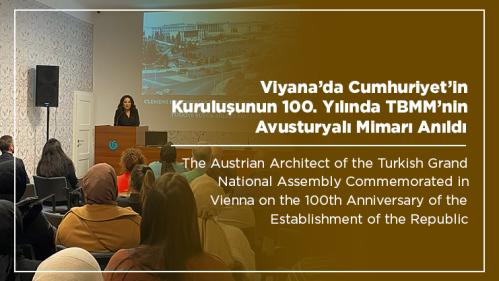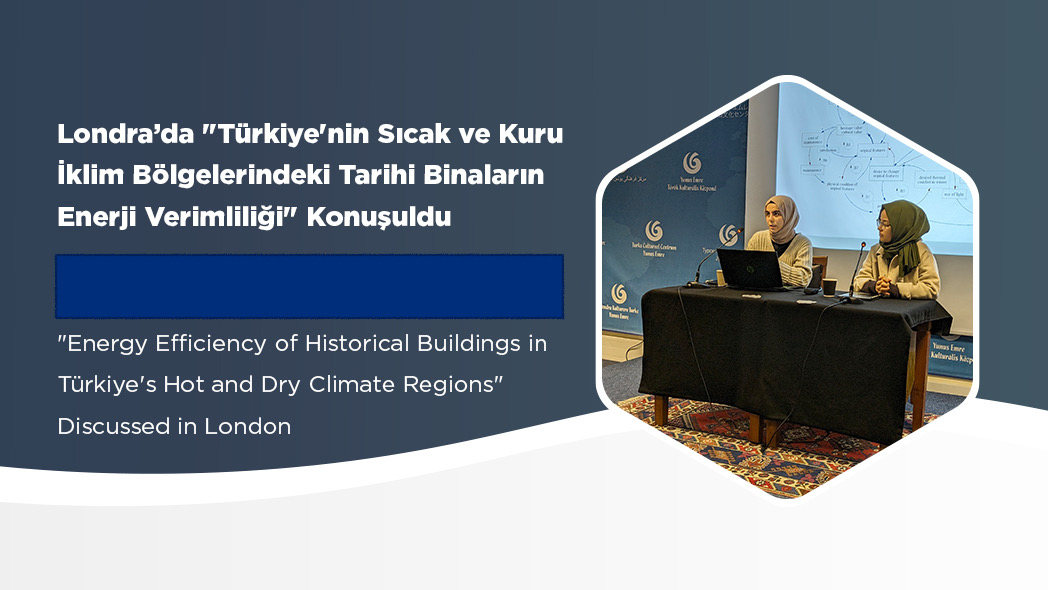The Austrian Architect of the Turkish Grand National Assembly Commemorated on the 100th Anniversary of the Establishment of the Republic in Vienna
On the occasion of the 100th anniversary of the founding of the Republic of Turkey, Clemens Holzmeister, the Austrian architect of the Turkish Grand National Assembly (TBMM), was commemorated with a program.
In the program held at Vienna Yunus Emre Institute, the works of Austrian architect Holzmeister in Turkey were explained and photographs of the construction process of the Turkish Grand National Assembly building were exhibited.
Türkiye's Ambassador to Vienna Ozan Ceyhun, Vienna Yunus Emre Institute Coordinator Ayşe Yorulmaz, Prof. Dr. Leyla Alpagut, representatives of Turkish and local institutions and guests attended.
In his speech, Turkish Ambassador in Vienna Ozan Ceyhun stated that we came together to remember once again the works that Holzmeister brought to Türkiye and Ankara on the occasion of the 100th anniversary of the founding of the Republic, and expressed his pleasure for Yunus Emre Institute to host this program.
Known for his works on Early Republican Period architects and architecture, Prof. Dr. Leyla Alpagut, explained that the development of the capital Ankara was handled very carefully, and that the concepts of national and modern were used simultaneously in the architectural works there and that they represented Türkiye in her speech discussing Holzmeister's works in Ankara and especially the construction process of the Turkish Grand National Assembly building.
Prof. Dr. Alpagut noted that in the early 1920s, architectural styles in which the sense of unity and solidarity came to the fore were decisive, and then a transition was made to modern architecture.
Stating that three important architects from the German geography played decisive roles in the development of the capital, Alpagut stated that Holzmeister, Ernst Arnold Egli and Bruno Taut presented an approach by synthesizing modern, cubic architecture with Anatolian lands in their works.
Alpagut stated that among these architects, the Austrian architect, who played a major role in the development of Ankara, came to Turkey in 1927 and carefully examined the works in Anatolia and tried to synthesize them with modern techniques.
Stating that 14 projects competed for the construction of the Turkish Grand National Assembly building, Alpagut said that three projects were deemed worthy of first place by the jury and that Gazi Mustafa Kemal Atatürk preferred Holzmeister's project.
Alpagut stated that the last project signed by Gazi Mustafa Kemal Atatürk before his death was the Turkish Grand National Assembly building, and added that the construction, the foundation of which was laid in October 1939, was completed in 1960 and the building began to be used in 1961.
After the conference, the guests visited the exhibition containing photographs of the construction process of the Turkish Grand National Assembly building.


